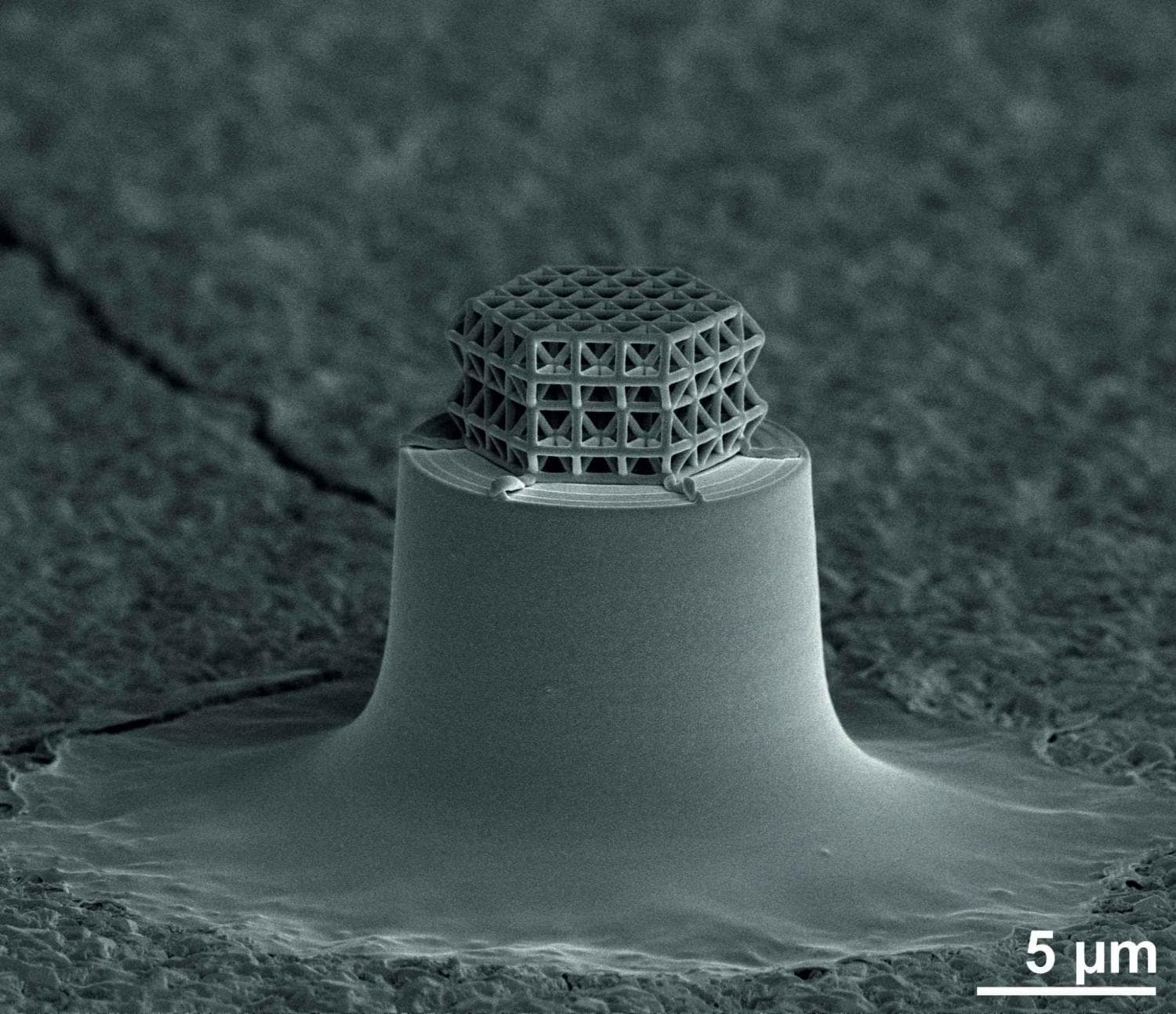SCALING DOWN
Scientists have successfully engineered the smallest lattice structure ever. It's less than 200 nm in diameter, and its struts and braces are fewer than 1 micrometer long—it is so minuscule that it undertakes previously manufactured metamaterials by a factor of 5. The lattice's size allows it to achieve previously unreached ratios of strength-to-density, which makes it ideal for application as electrodes, wave absorbers, filters, or optical components.
Micro-lattice is a highly ordered arrangement of atoms that results in symmetric structures. It is generally composed of glassy carbon atoms produced using 3D laser lithography technology. The desired structure is then hardened by computer-controlled laser beams. Traditionally, lattice produced this way has been limited to a length of five to ten micrometers, and a diameter of one micrometer.
To decrease the size further, the scientists shrunk the structure down with pyrolysis—it's the first time the process has been used in manufacturing microstructures. During pyrolysis, the object is exposed to temperatures of ~900° C in a vacuum furnace. The chemical bonds in the structure react by reorienting themselves, allowing all other elements except for carbon to escape. The end result is an almost impossibly small metamaterial.
The scientists took inspiration from strong lightweight construction materials that are common in nature, such as bone and wood. Dr. Jens Bauer of Karlsruhe Institute of Technology (KIT), the first author of the study, explains. "They have a high load-bearing capacity and small weight and, hence, serve as models for mechanical metamaterials for technical applications."
Details of their study have been published in Nature Materials.
METAMATERIALS OF THE FUTURE
The feat reflects an important breakthrough for metamaterials—they are are unique in that they have mechanical and optical properties that cannot be achieved by other solids. In fact, they are planned and manufactured specifically to develop these properties. Examples of such properties are invisibility cloaks that guide light, sound or heat around objects, and lightweight nanomaterials of high specific stability (force per unit area and density).
"According to the results, the load-bearing capacity of the lattice is very close to the theoretical limit and far above that of unstructured glassy carbon. Diamond is the only solid having a higher specific stability," Prof. Oliver Kraft, co-author of the study, remarked.
The research has helped validate the potential of microstructured metamaterials for use in insulation and shock absorption. Another possible use for the structure is the filtration of chemicals. The presence of glassy carbon in the metamaterial would also allow it to conduct electricity easily, which indicates its potential for use in the electrodes of batteries or electrolysis systems.
Share This Article
